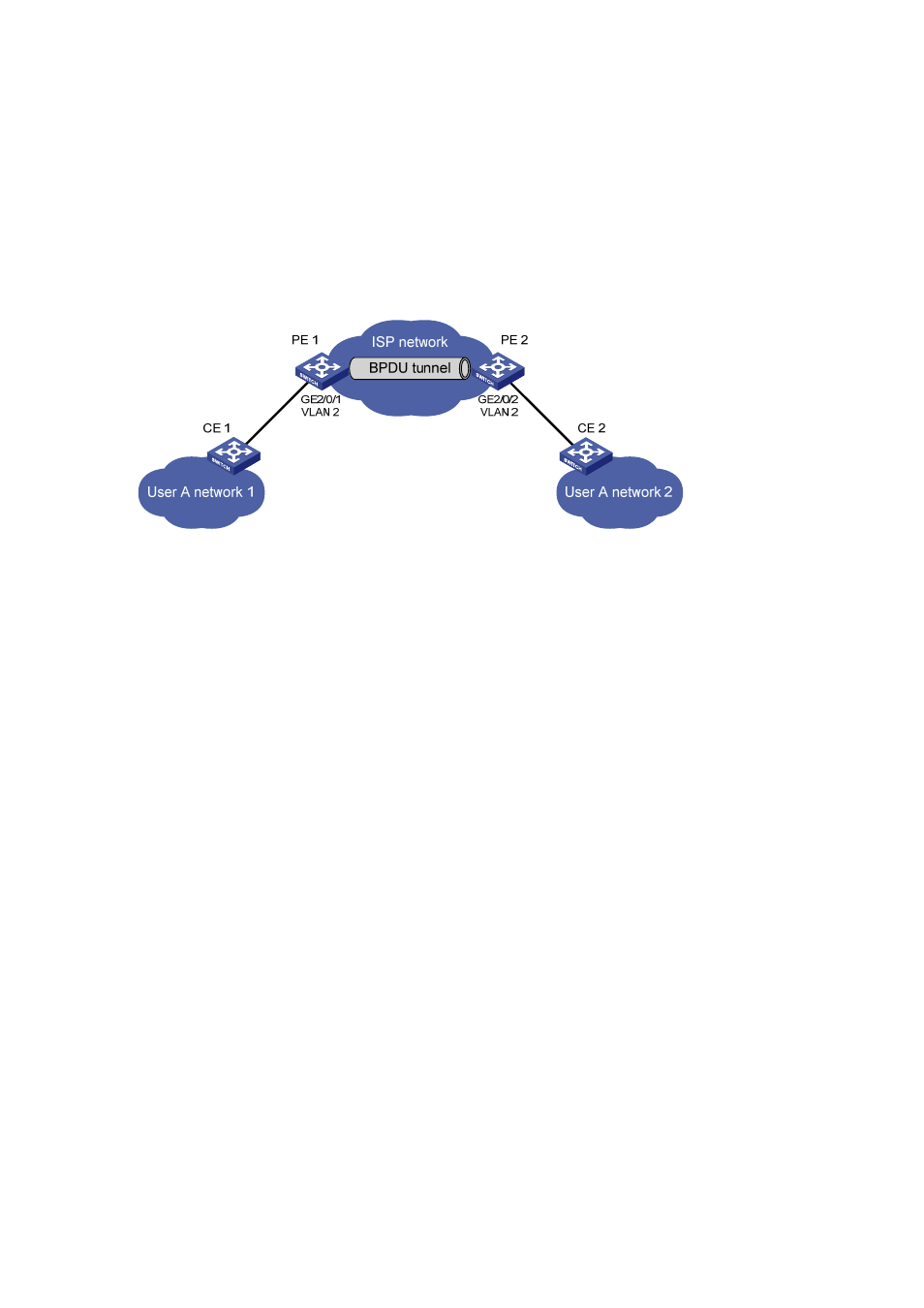Configuration procedure – H3C Technologies H3C S7500E Series Switches User Manual
Page 206

14-6
All ports that connect service provider devices and customer devices are access ports and belong
to VLAN 2; all ports that interconnect service provider devices are trunk ports and allow packets of
any VLAN to pass through.
MSTP is enabled on User A’s network.
It is required that, after the configuration, CE 1 and CE 2 implement consistent spanning tree
calculation across the service provider network, and that the destination multicast MAC address
carried in BPDUs be 0x0100-0CCD-CDD0.
Figure 14-3
Network diagram for configuring BPDU tunneling for STP
Configuration procedure
1) Configuration on PE 1
# Configure the destination multicast MAC address for BPDUs as 0x0100-0CCD-CDD0.
<PE1> system-view
[PE1] bpdu-tunnel tunnel-dmac 0100-0ccd-cdd0
# Create VLAN 2 and assign GigabitEthernet 2/0/1 to VLAN 2.
[PE1] vlan 2
[PE1-vlan2] quit
[PE1] interface gigabitethernet 2/0/1
[PE1-GigabitEthernet2/0/1] port access vlan 2
# Disable STP on GigabitEthernet 2/0/1, and then enable BPDU tunneling for STP on it.
[PE1-GigabitEthernet2/0/1] undo stp enable
[PE1-GigabitEthernet2/0/1] bpdu-tunnel dot1q stp
2) Configuration on PE 2
# Configure the destination multicast MAC address for BPDUs as 0x0100-0CCD-CDD0.
<PE2> system-view
[PE2] bpdu-tunnel tunnel-dmac 0100-0ccd-cdd0
# Create VLAN 2 and assign GigabitEthernet 2/0/2 to VLAN 2.
[PE2] vlan 2
[PE2-vlan2] quit
[PE2] interface gigabitethernet 2/0/2
[PE2-GigabitEthernet2/0/2] port access vlan 2
# Disable STP on GigabitEthernet 2/0/2, and then enable BPDU tunneling for STP on it.
[PE2-GigabitEthernet2/0/2] undo stp enable
[PE2-GigabitEthernet2/0/2] bpdu-tunnel dot1q stp